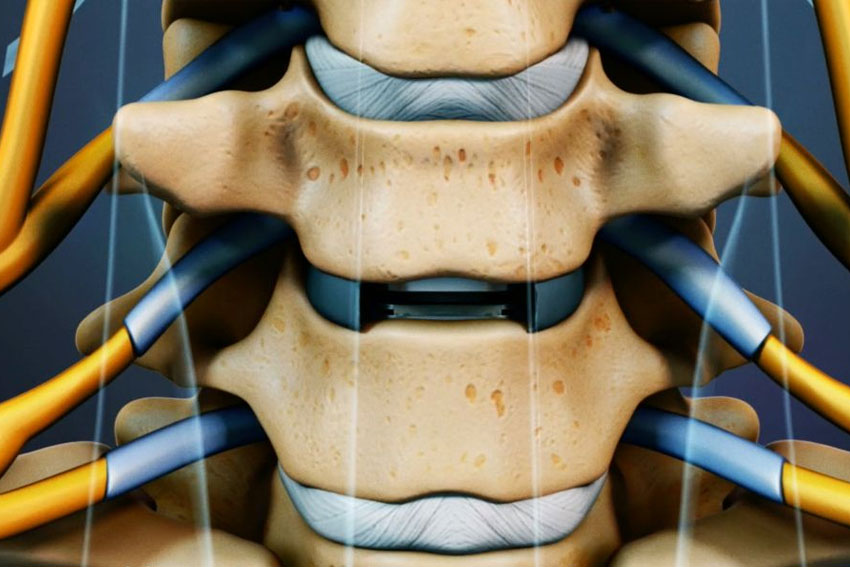
The human neck is comprised of seven vertebrae, the small bones that make up the neck and spinal column. Spongy, inter-vertebral discs acts as shock absorbers between the vertebrae to allow for free and comfortable movement. Cervical disc degeneration leads to thinner and less flexible cushions between the bones which can result in difficult mobility, bone spurs, and pressure on the spine cord and nerve roots. Cervical disc degeneration can affect people as young as twenty, depending on a variety of factors including lifestyle, previous injuries, overall health, and genetic predisposition. Most people will experience some level of cervical disc degeneration in their lifetime, although the degree of symptoms varies from individual to individual.
Cervical Disc Degeneration Symptoms
Patients suffering from cervical disc degeneration often experience symptoms such as:
- Stiff or Inflexible Neck
- Low Grade Neck Pain
- Headache
- Numbness, Tingling, or Weakness in Neck, Arms, or Shoulders
- Wrist Drop and/or Altered Sensation in Fingers
Cervical Disc Degeneration Diagnosis
Confirmation of cervical disc degeneration begins with a thorough physical, including an evaluation of neck extension and flexibility. Ultimately, confirmation of the diagnosis is made through diagnostic imaging including: X-Ray, MRI, and/or CT Scan. Fortunately, although cervical disc degeneration is not reversible, it is treatable.
Traditional Cervical Disc Replacement Surgery
Treatment for advanced cervical disc degeneration focuses on the removal of the degenerated disc and replacing it with an artificial cervical disc designed to ultimately restore function and minimize discomfort. Anterior cervical discectomy and fusion (ACDF) has long been considered the standard of care for cervical disc replacement.
The ACDF procedure entails the removal of the degenerated disc(s), and replacing it with a plastic insert. The insert is held in place by a metal plate that screws into the bones at the front of the neck. The plate also serves to eliminate mobility in the area, thereby encouraging bone growth (fusion) between the vertebrae.
Mobi-C: Cutting Edge Cervical Disc Replacement
LDR, a global medical device company, has developed a revolutionary approach to cervical disc replacement that encourages mobility following cervical disc replacement surgery, rather than eliminating it. Dr. Spivak and his team are proud to offer Mobi-C, a proven advancement in cervical disc replacement.
The Mobi-C artificial cervical disc is composed of two bio-compatible metal (cobalt chromium alloy and polyethylene) plates with a plastic insert between them. Each metal plate has bone-grasping teeth covered by a coating that allows the surrounding bone to anchor for long-term stability and mobility. This approach spares the surrounding bone and offers patients the opportunity to return to full, normal function.
Proof of Performance
Based on a 599-patient, 24-site, clinical trial , Mobi-C demonstrated not only equivalent, but significantly superior long-term results compared to the current cervical disc replacement surgery standard of care. As such, Mobi-C is the first and only artificial cervical disc approved by the FDA.
